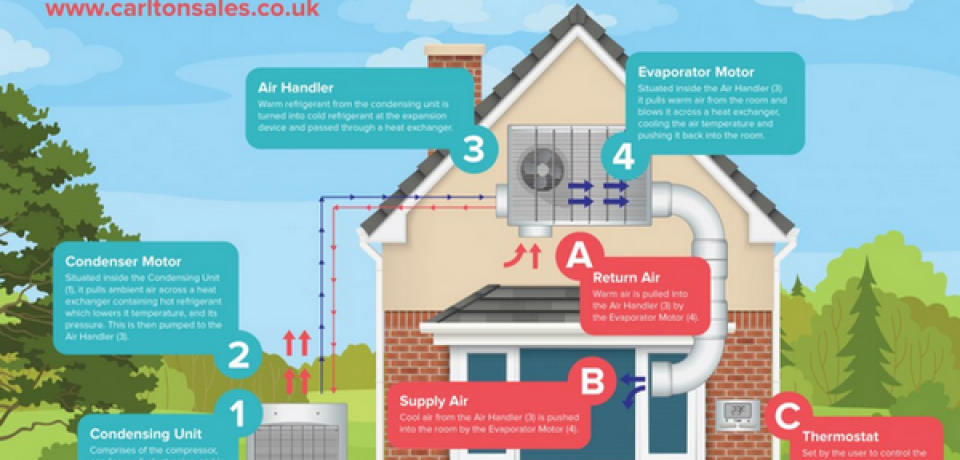The Ultimate Guide To Understanding Warm Pumps - Just How Do They Function?
The Ultimate Guide To Understanding Warm Pumps - Just How Do They Function?
Blog Article
Short Article Writer-Steenberg Hemmingsen
The best heat pumps can save you substantial amounts of cash on energy bills. They can likewise help in reducing greenhouse gas exhausts, particularly if you make use of power instead of fossil fuels like propane and heating oil or electric-resistance heating systems.
Heatpump work very much the like air conditioning unit do. https://cost-to-add-central-heat56555.aboutyoublog.com/30445919/the-definitive-overview-to-choosing-the-right-dimension-heat-pump-for-your-home makes them a practical option to standard electrical home furnace.
Exactly how They Function
Heatpump cool homes in the summer and, with a little assistance from electricity or natural gas, they provide some of your home's home heating in the winter season. They're a great choice for individuals who intend to minimize their use of nonrenewable fuel sources but aren't all set to replace their existing heater and a/c system.
They depend on the physical reality that also in air that appears also chilly, there's still power present: warm air is always relocating, and it intends to relocate into cooler, lower-pressure atmospheres like your home.
Many power celebrity certified heatpump run at near their heating or cooling ability throughout the majority of the year, decreasing on/off biking and saving energy. For the best efficiency, focus on systems with a high SEER and HSPF rating.
The Compressor
The heart of the heatpump is the compressor, which is additionally referred to as an air compressor. This mechanical streaming tool makes use of potential energy from power production to increase the stress of a gas by lowering its volume. It is different from a pump because it only services gases and can't collaborate with liquids, as pumps do.
Climatic air goes into the compressor with an inlet shutoff. It travels around vane-mounted arms with self-adjusting length that separate the inside of the compressor, producing several cavities of varying size. The blades's spin pressures these tooth cavities to move in and out of phase with each other, pressing the air.
The compressor attracts the low-temperature, high-pressure refrigerant vapor from the evaporator and compresses it right into the hot, pressurized state of a gas. air conditioning specialists is repeated as required to provide home heating or cooling as required. The compressor also contains a desuperheater coil that recycles the waste heat and includes superheat to the refrigerant, altering it from its liquid to vapor state.
The Evaporator
The evaporator in heat pumps does the exact same point as it carries out in fridges and ac unit, changing liquid cooling agent into a gaseous vapor that gets rid of warmth from the room. Heat pump systems would not function without this vital tool.
This part of the system is located inside your home or building in an indoor air handler, which can be either a ducted or ductless unit. heat pump store has an evaporator coil and the compressor that presses the low-pressure vapor from the evaporator to high pressure gas.
Heat pumps soak up ambient warm from the air, and afterwards make use of electrical energy to move that warmth to a home or business in heating setting. That makes them a lot much more power efficient than electric heaters or heaters, and due to the fact that they're using tidy power from the grid (and not burning gas), they additionally generate far fewer exhausts. That's why heat pumps are such fantastic ecological options. (And also a big reason why they're becoming so preferred.).
The Thermostat.
Heat pumps are great choices for homes in cool environments, and you can use them in combination with conventional duct-based systems and even go ductless. They're a wonderful alternate to nonrenewable fuel source heater or traditional electric heaters, and they're a lot more sustainable than oil, gas or nuclear cooling and heating tools.
Your thermostat is the most essential component of your heat pump system, and it functions very in a different way than a standard thermostat. All mechanical thermostats (all non-electronic ones) work by utilizing materials that change dimension with increasing temperature level, like coiled bimetallic strips or the broadening wax in a car radiator shutoff.
These strips include 2 different sorts of steel, and they're bolted with each other to develop a bridge that completes an electric circuit attached to your heating and cooling system. As the strip gets warmer, one side of the bridge broadens faster than the other, which creates it to bend and signal that the heating system is required. When the heat pump remains in home heating setting, the turning around shutoff turns around the circulation of cooling agent, to make sure that the outside coil currently works as an evaporator and the indoor cylinder ends up being a condenser.